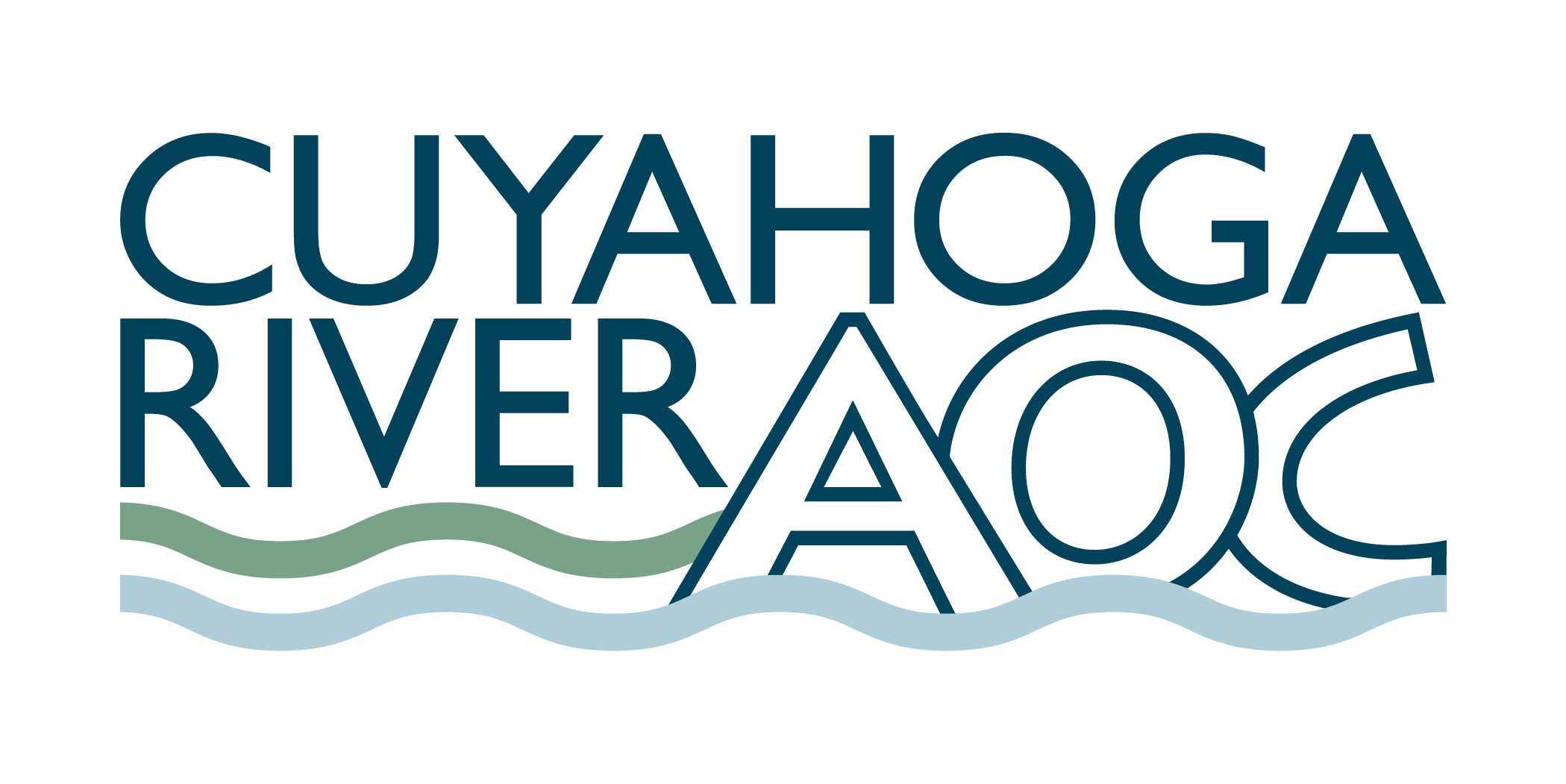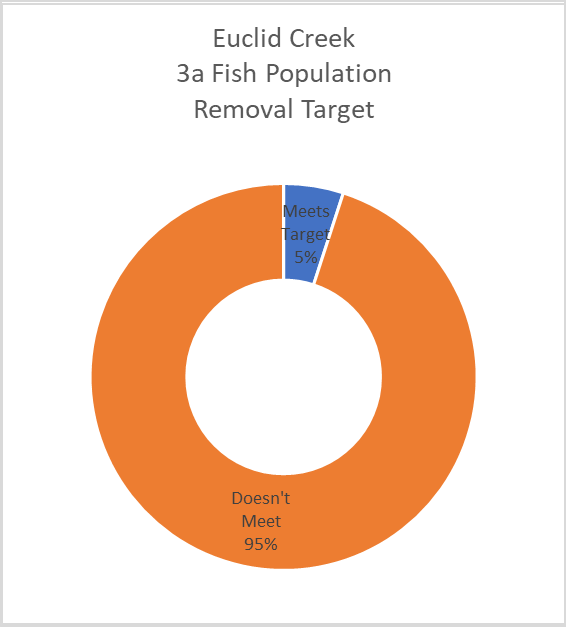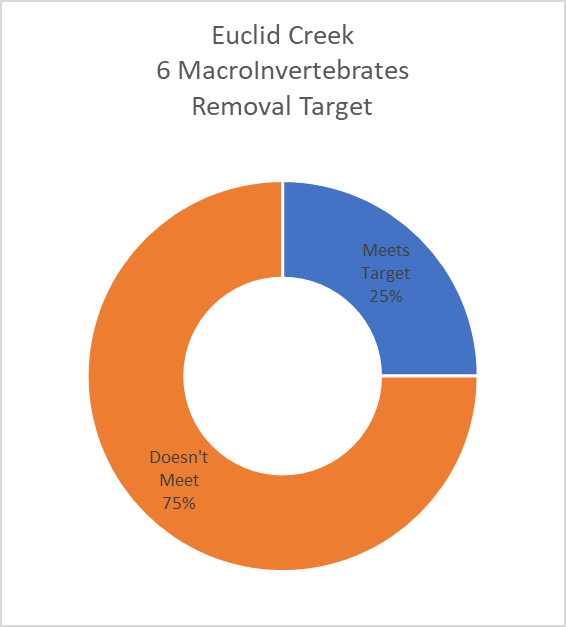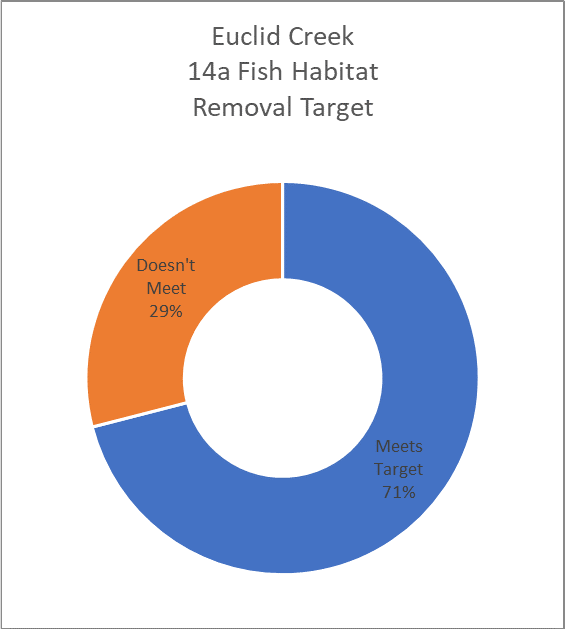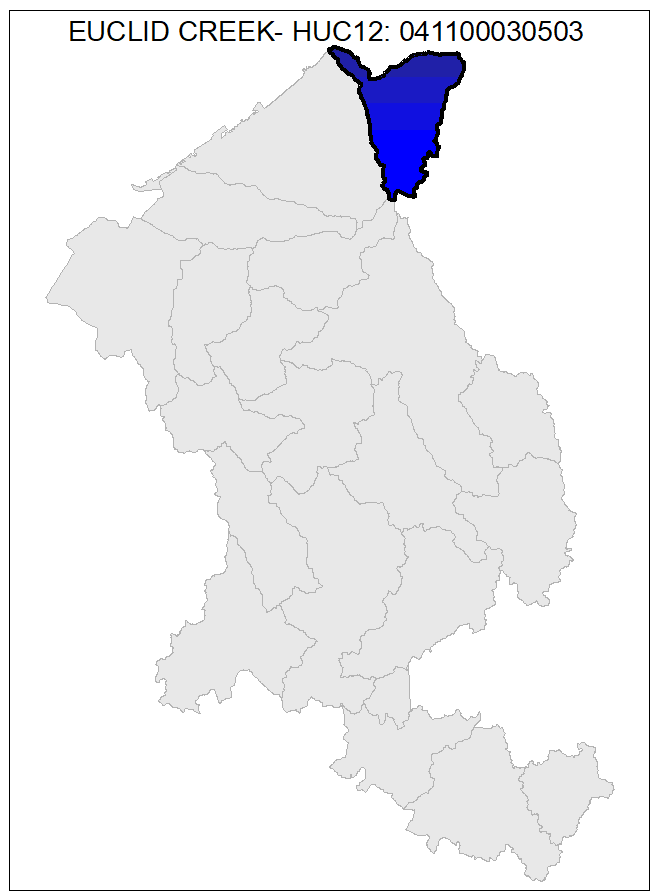
BUI 4 - Fish Tumors and Other Deformities in Euclid Creek
The metric for this impairment is a measure of Deformities, Eroded fins, Lesions and Tumors (DELTs.)
The delisting target for this BUI is an average DELT value of 3% or under (1.3% in wading sites) AND, in areas where brown bullhead are present, the liver tumor prevalence rate cannot be higher than 5%.
Analyzing the scores with attainment levels in mind, the average DELT value is close to .0000% for the subwatershed. This number was derived from the DELT sampling data from 2013-14.
However, a sample done to test for liver neoplasms in brown bullhead catfish at the nearshore area of Euclid Creek, showed a 12.5% prevalence rate in 2013, indicating that this BUI is not yet delistable and more monitoring is needed.
BUI 10 - Beach Closings / Recreational Contact
This BUI’s delisting targets require that beach advisories due to bacterial contamination be issued no more than 10% (fewer than 19 days) of the recreation season. The target must be met in 3 out of the 5 most recent years.
This BUI can also be considered restored when bacterial impacts from Combined Sewer Overflows (CSOs) are being addressed under a long term control plan where CSOs are the primary cause of impairment. The Northeast Ohio Regional Sewer District currently is operating under a long term control plan, including gray infrastructure in the form of retention tunnels throughout its sewershed as well as green infrastructure (as short term control while the infrastructure is built).
We will be studying what that means for attainment with regard to delisting, and whether reducing CSO discharges along actually results in reducing bacterial contamination to a level that reduces beach closings.
Currently, the beach-closing metric has been met in only 1 of the last 5 years.
